3-way switch circuits -- Variations
Here are several variations of using 3-way switches to control lights from two locations. Colors are shown consistent with the NEC. Before reading this page, you may want to visit 3-way switches and 4-way switches.
Single light circuits
Below is perhaps the simplest arrangement, panel to switch to switch to light:
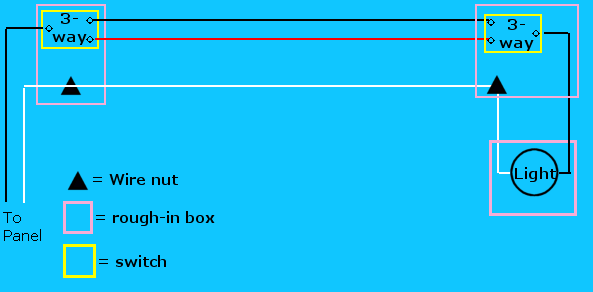
Below is a variation with the light between the two switches, i.e., panel-switch-light-switch. In this case, the end of the white wire from the light box to the right switch must be re-marked black to indicate that it is a hot wire:
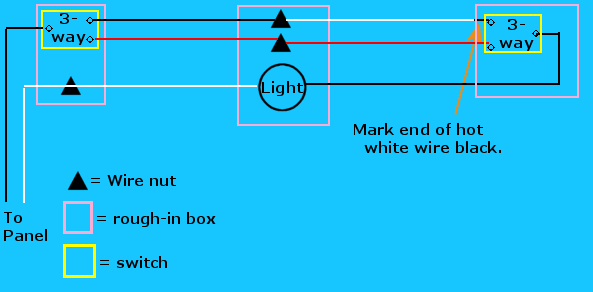
Next is a circuit with the light between the two switches, but with the panel feeding the light box. Note similar remarking to above.
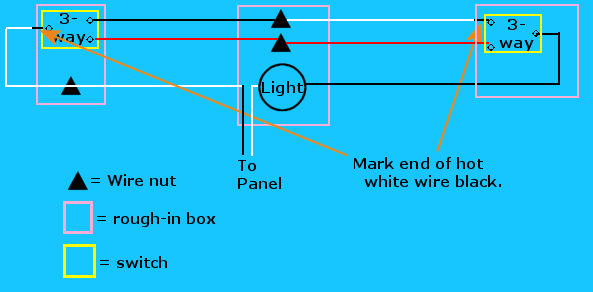
Controlling More than one light
Any of the above can be modified to control multiple lights. Additional lights are just wired in parallel with the first, using two conductor cable. The black should be connected to the black wire feeding the light and the white to the white wire feeding the light in all cases. Here is one example.
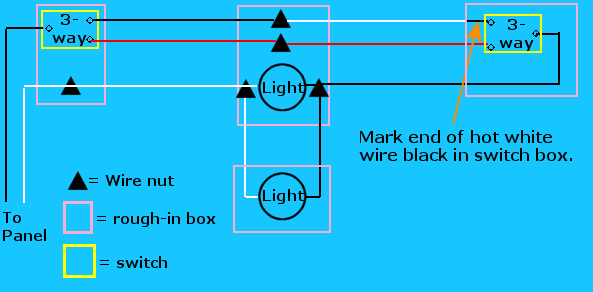
Here is a rather different arrangement that requires 3-conductor cable between lights:
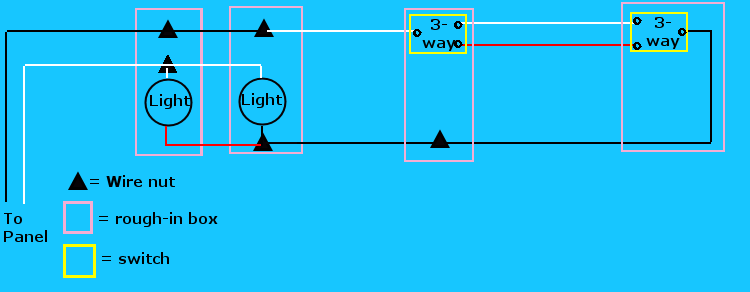
Just showing off
Occasionally, someone will ask if it is possible to wire a circuit that connects panel-switch-light-light-switch. It is, but you need to use four-conductor cable, as seen below. Generally it is cheaper to just wire the second light in parallel with the first using two-conductor cable, as shown earlier on this page.
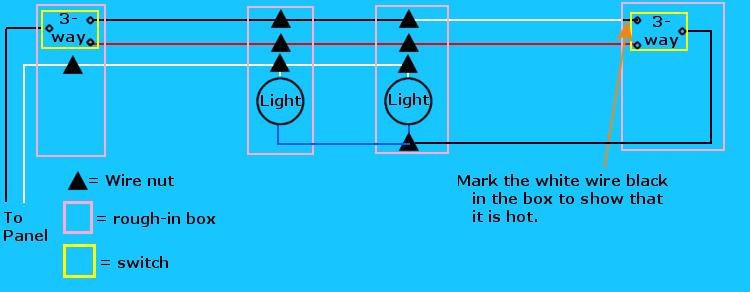
<Previous: How 4-way switches work -- an animation | Main Switches Page | Next: 4-way switch variations>
- 3-way switches and 4-way switches
- 4-way switches -- an animation
- Multiple lights and multiple switches
- Miscellaneous tips and info
- Rick Matthews' home page